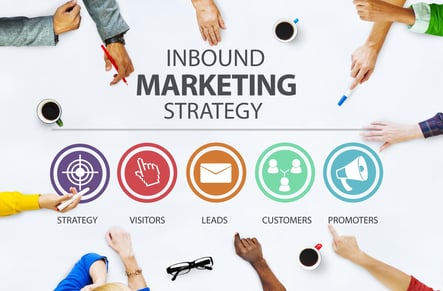
For the past few years now, inbound marketing has been one of the hottest topics of conversation at the business table. It generated a lot of buzz among marketing departments for its new and unorthodox ways of attracting customers. It capitalized on a culture of information-hungry people. Instead of forcing your brand onto consumers through aggressive advertising, inbound marketers would educate and provide meaningful discussions in their specific field. This helped to attract customers to their product in a natural, less invasive way.
Now that you have an idea of what inbound marketing is, here are some reasons why it’s better than your outbound marketing approach.
Inbound Marketing Is Perceived More Positively
Statistically speaking, your inbound marketing strategy is going to have a 400 percent success rate over outbound marketing campaigns. Anecdotally, it's easy to see why. You probably don't enjoy getting junk mail or calls from telemarketers, and you probably ignore most visual ads, be they billboards along the highway or banner ads on a website.
The advantage inbound marketing has over outbound marketing gets even more clear when you look at the following stats:
- Ad blocking will result in a 10 percent loss of an ad-based marketing campaign
- Content marketing is 3 times as effective as traditional marketing
- Of 12 categories of digital outbound marketing, only one (email newsletters) had more positive responses from survey takers than negative ones in a 2015 Q4 Hubspot survey
Yes, outbound can be effective, especially when it's paired with inbound marketing, but it's also more expensive and can burn bridges with sensitive customers who dislike being sold to. Inbound is as, or more, effective as outbound, yet the costs are lower and consumers actually respond favorably to it. Which leads to…
Inbound Marketing Builds Trust
One of the biggest advantages that inbound marketing has over outbound marketing is the ability to engage with customers. You get to write educational pieces on your blog or social media page, which helps make you look like an authority in your specific field.
This also enables customers to ask questions or provide feedback, either on your blog or on a social media platform. Starting a dialog with these customers is a great way to build trust and loyalty, while also showing customers that you value what they have to say.
If you’re still not sold, consider the following: almost 75 percent of marketers surveyed admitted that content creation was of the best marketing strategies available in the company’s toolbox. It makes perfect sense when you think about it, too. People want to know what they’re spending their money on. Inbound marketing tactics enable this by letting you educate customers while simultaneously attracting them to your product.
Inbound Marketing Is the Present, Not the Future
At this point in time, sticking to outbound marketing strategies means that you’ve not adapted to the changes in marketing. Especially when you consider the following marketing statistics:
- Less than 20 percent of customers’ purchasing decisions are informed by sales pitches.
- More than half of marketers are prioritizing blogging over other strategies.
- About 30 percent of consumers actually said they would like to see more blogging from their favorite companies.
Rather than look at inbound marketing as a strategy that triumphs over outbound marketing, see it as a necessary change in the market. Companies who don’t adopt an inbound strategy could fall behind.

